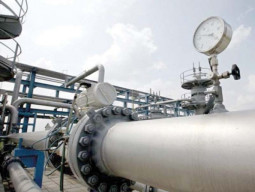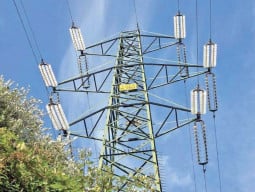
The International Monetary Fund has agreed to review a proposal backed by the Special-Investment Facilitation Council aimed at reducing the subsidy burden of the industrial sector by 91%. This initiative aims to make Pakistani exporters more regionally competitive by potentially lowering their monthly bills by up to 29%.
Pakistani and IMF authorities are scheduled to hold virtual discussions early next week. The IMF’s endorsement could lead to a reduction in electricity bills for large industrialists and small manufacturers, ranging from 16% to 29%, according to government sources.
The IMF will also assess the practicality of the government’s plan to write off the Rs268 billion commercial debt of Pakistan International Airlines, incorporating it into the public debt. Additionally, the Rs1.28 trillion energy sector circular debt reduction plan will be taken up by the IMF early next week.
The proposals, including cleansing the PIA balance sheet, lowering electricity bills for industrialists, and eliminating Rs1.27 trillion circular debt, have been vetted by the 9th session of the SIFC during its February 2nd gathering.
The 9th session has clarified the future role of the SIFC, expected to be further strengthened post the February 8th elections based on the past eight months’ experience of the civil-military joint body. A new legislation might be introduced in the next Parliament to make SIFC decisions binding without compromising the authority of the federal cabinet. A transition of the SIFC work from the interim cabinet to the new federal cabinet will be facilitated through briefing sessions, according to sources.
Elements causing hurdles in the smooth functioning of the SIFC might be weeded out in the process. In recent days, two non-cooperative federal secretaries have been sent home without new responsibilities after their transfers.
Sources said the power tariff rationalisation plan has been transmitted to the IMF, but it comes with its own pitfalls. While it reduces the cross-subsidy burden of the industrial sector by 91% or Rs222 billion, it increases the subsidy burden on residential consumers using over 400 units by 41% or Rs22 billion. Currently, residential consumers are paying Rs200 billion in subsidies and may face an additional burden through Rs50 to Rs3,000 per month fixed charges in their bills.
Over time, successive governments have shifted the responsibility of providing affordable electricity to residential consumers by charging subsidies from other residential, industrial, and commercial consumers. This year’s estimated annual cost of electricity subsidies is Rs631 billion, with Rs473 billion funded by residential, industrial, and commercial consumers, and only Rs158 billion by the government, as per the Ministry of Energy officials.
Read Rs975b power subsidies proposed
The share of industrial consumers in cross-subsidy is Rs244 billion, expected to reduce to Rs22 billion – a 91% lower burden. Consumers using up to 400 units monthly receive Rs592 billion subsidies at Rs13.65 per unit rate. Out of this, Rs592 billion goes to lifeline and protected consumers, amounting to a burden that the federal government should bear instead of passing it on to other consumers.
The industrial consumer pays Rs8.61 per unit subsidy, while the residential consumer with consumption above 400 units pays Rs5.88 per unit. The Energy Ministry proposes fixed charges on all types of residential consumers to reduce cross-subsidy for industrial consumers. It suggests Rs50 per unit fixed charge on 50 units monthly consumption, Rs150 on 100 units monthly consumption for lifeline consumers, Rs300 fixed charge on 100 units monthly consumption for non-lifeline consumers, and Rs450 per month on up to 200 units for protected consumers.
Proposed charges also include Rs450 to Rs3,000 per month fixed charges for unprotected residential consumers with monthly consumption ranging from 1 unit to above 700 units. Subject to IMF approval, cross-subsidy to domestic consumers using less than 400 units would be reduced by Rs161 billion to Rs431 billion. The energy ministry claims that the prices of lifeline and protected consumers have not changed since 2021, despite a 50% increase in average prices.
Industrial cross-subsidy will decrease from Rs244 billion to Rs22 billion, with no net increase for them due to a reduction in variable charges. These changes would lead to an overall effective industrial tariff ranging from Rs8.5 cents per unit to 11.75 cents per unit. The Indian effective industrial tariff is 10.5 cents, including a 7.46 cents variable tariff.
After revision, electricity prices for cottage industry would decrease by 28%, SMEs and power looms prices would be cut by 16%, large industry bills would go down by 29%, and cement and chemical plants tariffs would be reduced by 28.7%. In absolute terms, there will be a Rs7 to Rs12 per unit reduction in electricity prices for industrial consumers, according to the proposed plan.
However, residential bills will increase by 4% to 39% due to the imposition of fixed charges in lieu of the withdrawal of a net Rs200 billion cross subsidy. The maximum increase of 39% is for up to 100 units of protected consumers, whose bills are estimated to increase from Rs774 to Rs1074 per month. However, their prices after an increase would still be lower than the average production cost, as they would continue to receive subsidies.
Published in The Express Tribune, February 4th, 2024.
Like Business on Facebook, follow @TribuneBiz on Twitter to stay informed and join in the conversation.




1723032398-0/BeFunky-collage-(36)1723032398-0-165x106.webp)
















COMMENTS
Comments are moderated and generally will be posted if they are on-topic and not abusive.
For more information, please see our Comments FAQ